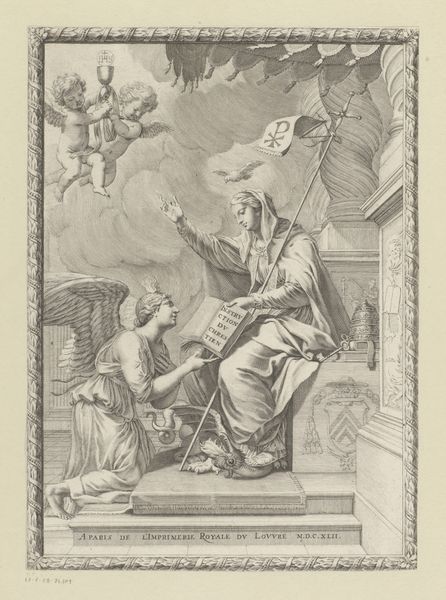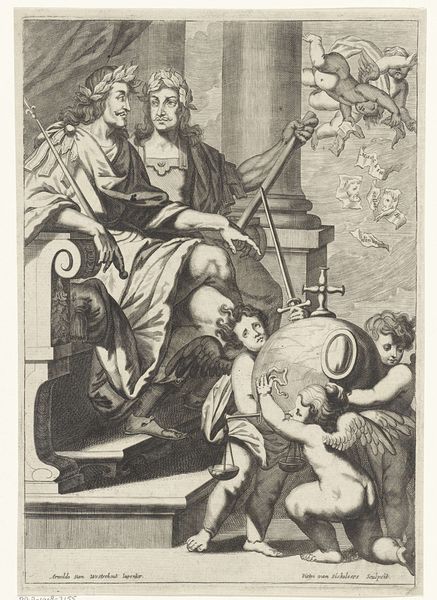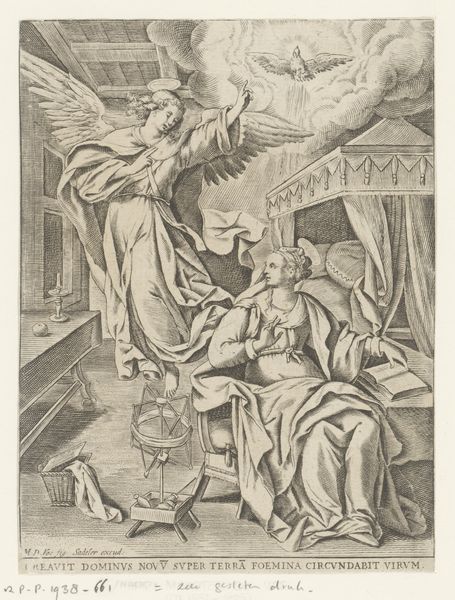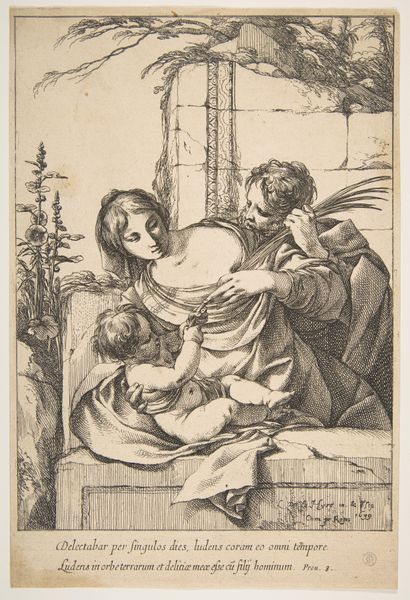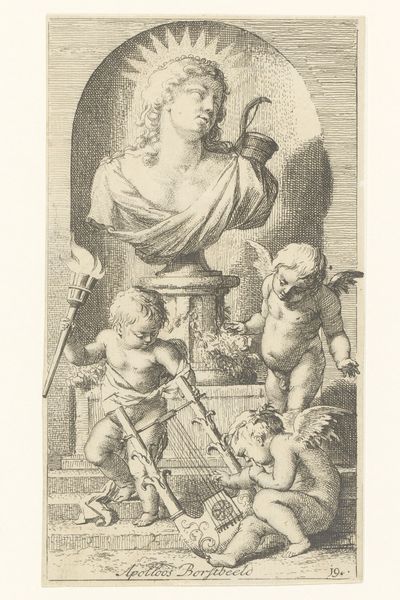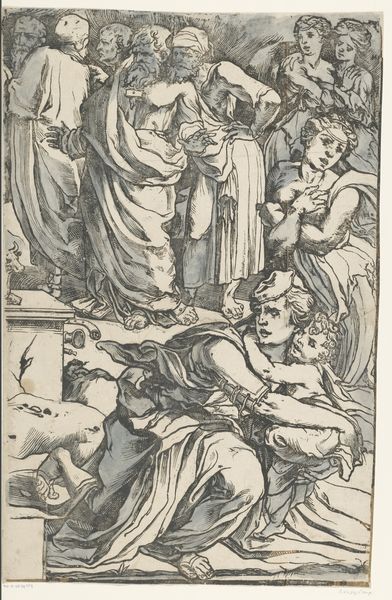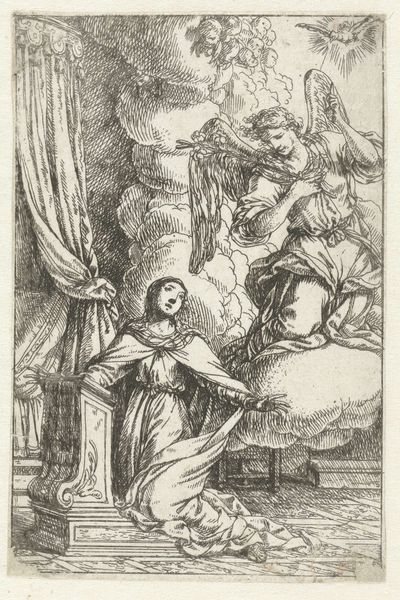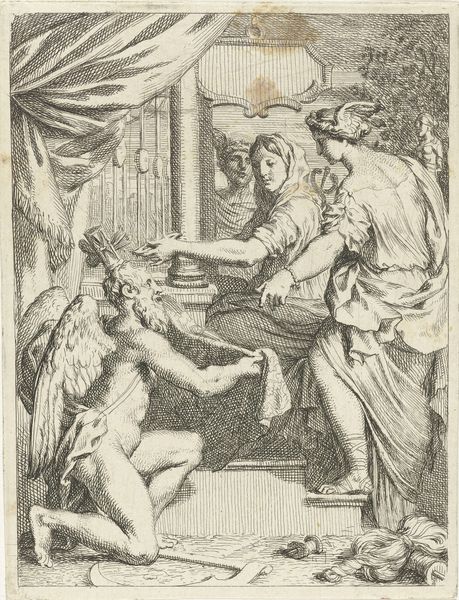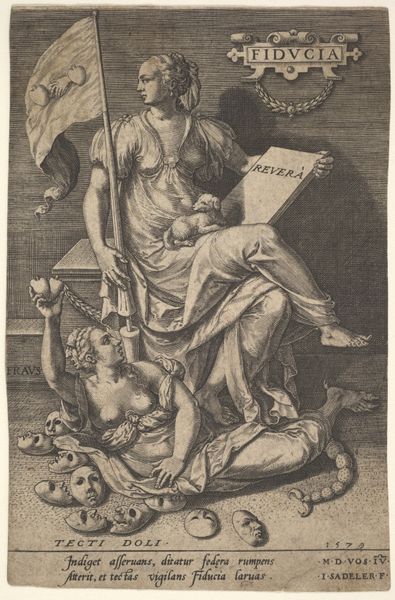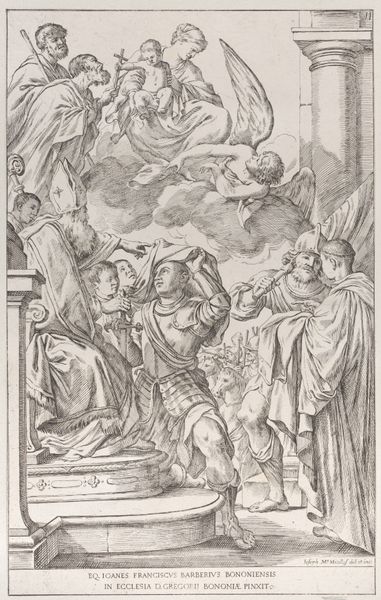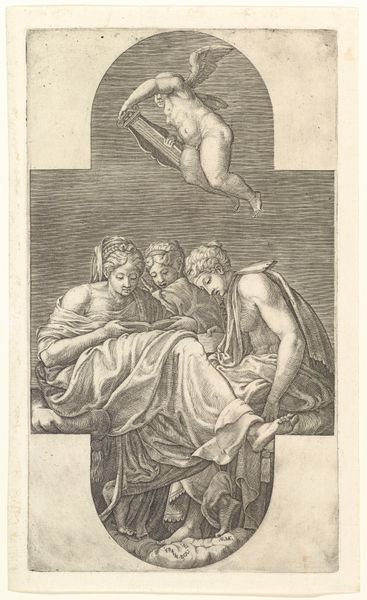
print, intaglio, engraving
#
allegory
# print
#
pen sketch
#
intaglio
#
pencil sketch
#
figuration
#
ink drawing experimentation
#
pen-ink sketch
#
line
#
sketchbook drawing
#
italian-renaissance
#
sketchbook art
#
engraving
Dimensions: height 315 mm, width 255 mm
Copyright: Rijks Museum: Open Domain
Curator: Good morning. Today we're examining "Two Sibyls with Angel and Putto," an engraving made by Giovanni Antonio da Brescia between 1511 and 1520. Editor: This piece immediately strikes me as quite serene. The delicate lines, the understated composition… there’s an ethereal quality that pervades it all. Curator: Indeed. Consider the interplay of line and space. Da Brescia masterfully employs line—notice the varying densities creating form and depth. Observe the meticulous parallel hatching! This lends considerable volume and emphasizes certain textural qualities, for instance in the clothing of the two sibyls. Editor: You know, looking closer, there's something of an almost academic dialogue happening here, no? Two figures in conversation, an angel bearing what appears to be a message... Perhaps the work captures the spirit of Renaissance intellectual life? Were there particular workshops or circles Brescia engaged with in his production of prints? Curator: That is plausible. The print participates in a wider phenomenon in the Renaissance when these ancient prophetic figures of sibyls were revived to comment on, and in this case perhaps to sanction, civic and religious ideas. It would have certainly been appreciated among intellectual circles, even perhaps serving as the cover image of a publication, though, there's nothing confirming its practical use. Instead, its relatively small size and medium indicates it may have circulated for art collecting and devotional purposes, reaching the public more broadly. Editor: Speaking of medium, the monochromatic quality really accentuates the forms themselves. The lack of color pushes the viewer to consider solely the relationship of figures to one another. It’s as if we’re meant to parse this intellectual scene through pure, unadulterated form. Curator: An astute observation. Note how he's created light and shadow primarily through the density of his engraved lines. The light seems to originate from an unseen source above, casting subtle shadows that model the figures and create a sense of depth. The contrast draws our attention to essential elements of the composition. Editor: All told, I find the image deeply reflective and calming; there's an invitation to contemplation woven into the composition itself. Curator: Yes, it's a piece that continues to yield insight with prolonged looking. It invites the viewer to really slow down and ponder all the delicate formal relationships. Hopefully we have helped to provide you with some directions for engaging this complex object.
Comments
No comments
Be the first to comment and join the conversation on the ultimate creative platform.


